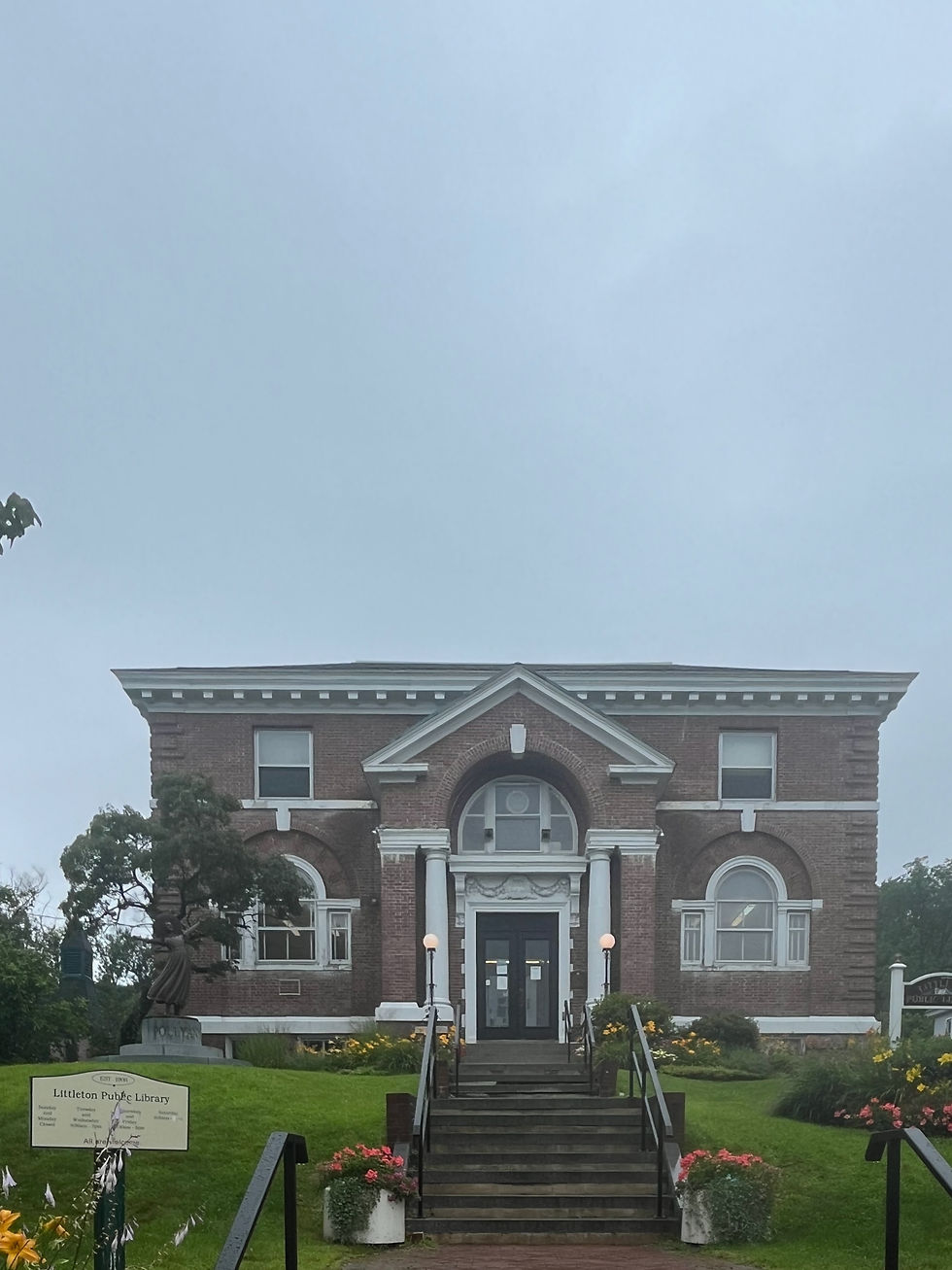Day 19, Sunday, March 3, Dallas, Texas to Jefferson, Texas
- Mark Carl Rom
- Mar 17
- 3 min read
Updated: Mar 24
Carnegie libraries visited: Jefferson
Driving away from Will’s home, I had a rare feeling of joy and peace on this Sunday morning. I’m healthy and sober. I’m having adventures and satisfying my curiosities. The sky is crystalline and the road is open. I’m going to have a restful day of working out, driving a couple of hours, and then exploring the historic town of Jefferson, Texas, as libraries are closed today.
Soon I am brought back to earth. I pull into the YMCA and it’s closed until 1 pm. Hmm. I pull up my YMCA app and look up the other local Ys. Closed. Closed. Closed. Then I remember. It’s the Young Men Christians Association and I am deep in the heart of Texas. Of course the Ys are closed until after church on Sunday. (At my home Y in Bethesda, Sunday is recognized only by opening at 8 rather than the usual 5.30.) I drive next to a local AA meeting which does not appear to be happening today as scheduled. Nevertheless, I remain joyful, peaceful, healthy, and sober.
Even when I see a van with a big LGBFJB sticker and a stockade of Trump flags.

The women who have made American public libraries are recognized – not enough, but still – in small ways. I find an historical marker noting that the Mineola Public Library
"was established largely through the efforts of Vivian Williams Lott…A group of local citizens met in Lott’s home to begin organizing the institution, and during a 1950 public meeting, Mineola Public Library was established. It opened in the school on May 22, 1950, with around 600 books catalogued."

Unfortunately, by 1979 city officials decided that they no longer wanted to provide the library financial support. Fortunately, the local Meredith Foundation picked up the tab, and today it goes by the Mineola Memorial Library. I’m saddened that the town didn’t have the foresight to fund its public library, but glad that a foundation was there to step in.
Twenty-nine towns in the US are named Jefferson – whether they are all named after Thomas Jefferson is a question not meriting further research, although I did learn that four of these Jeffersons (in Wisconsin, Missouri, and Iowa, in addition to Texas) have libraries funded by Carnegie – and the one in northeast Texas is a charmer. It is a small town (pop < 2000) and not an especially touristy one for being a tourist town. Its compact historic district is full of well-loved homes. The wide bricked main streets are dotted with locally-owned shops. It has fine public buildings, including a Carnegie library; the Marion County Courthouse; the Jefferson Historic Museum and Jefferson Playhouse; and Christ Episcopal Church, Cumberland Presbyterian Church, First Baptist Church, and First United Methodist Church. Jefferson lists 28 inns and B&Bs.
As my hip still hinders my walking, I’m tempted to rent a golf cart: there is very little car traffic and half a dozen rental shops nearby. My vanity and frugality kept me from that (weekend rentals begin at $300), and so I limped along, ending the day with a whopping 5628 steps, about a third as much as I would want to walk if healthy. The homemade Texas mudslide ice cream cone, applied liberally to my lips, helped relieve the pain.
Jefferson seemed modestly prosperous, and the historic business district was. Its poverty is hidden from the eyes of the visitor. Over 50 percent of the town’s children live in homes below the poverty line. Reflecting on this, it occurs to me that I did not see any children on my tour. Nor any African Americans, even though they comprise 35 percent of the residents. Those in the golf carts were older, white, and able to afford the weekend rates.
I did not need to pee in the street tonight, as I slept in a parking lot behind the sheriff’s office and county courthouse and the bathrooms within seemed to be open 24 hours a day. The lot, on the edge of town, backed up to a wooded area on the edge of the Big Cypress Bayou. The residents of a van parked there were eating dinner off styrofoam plates on a picnic table next to the lot. Across the street, at the corner of the courthouse, stands a statue erected “in honor of our dead, 1861-1865” the Confederate soldiers who died during the Civil War. Between the “our dead” and the “1861-1865” a line of text had been sandblasted off. My fevered imagination pondered what outrageous claim had been erased. Cheri, responding from the Jefferson Museum, told me the mystery words were simply “Oakwood Cemetery,” where the statue had initially been placed.







Comments